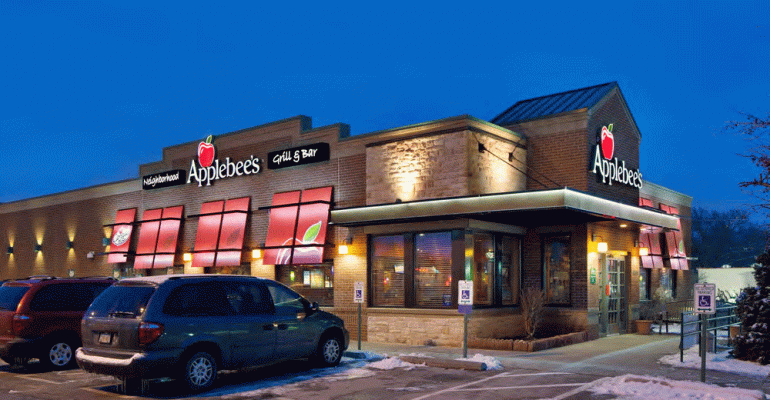 This is part of the Nation’s Restaurant News annual Top 200 report, a proprietary ranking of the foodservice industry’s largest restaurant chains and parent companies.
This is part of the Nation’s Restaurant News annual Top 200 report, a proprietary ranking of the foodservice industry’s largest restaurant chains and parent companies.
You’ve probably heard that Casual Dining is dying. You’ve probably also heard that Casual Dining is turning around — while finding new and exciting niches. Both statements are true.
The segment includes a varied group of restaurants, from bar-and-grills to mid-tier and higher-end steakhouses. Theme restaurants are part of the segment, too, focusing on activities like wine tasting and video gaming.
Although Casual Dining is snagging a smaller piece of the dining-dollar pie, strong new concepts are emerging and established players are retooling, conforming to their new reality and finding their footing, even if it means shedding a few units.
 Twenty-five of the 62 Casual-Dining chains in the Top 200 saw sales decline in the Latest Year, compared with 31 in the Preceding Year. Average sales growth within the segment was barely positive, at 0.4 percent for the Latest Year, compared with average Top 200 chain sales growth of 3.2 percent.
Twenty-five of the 62 Casual-Dining chains in the Top 200 saw sales decline in the Latest Year, compared with 31 in the Preceding Year. Average sales growth within the segment was barely positive, at 0.4 percent for the Latest Year, compared with average Top 200 chain sales growth of 3.2 percent.
The numbers don’t reflect a booming segment, but Alan J. Liddle, NRN senior data and event content director, doesn’t buy that Casual Dining is dying.
“There are troubled chains, and they are challenged on multiple fronts, but there’s always successful chains that will find a way to succeed,” Liddle said.
Setting aside the debate on the segment’s future extinction, it’s hard to ignore the challenges that many Casual-Dining chains have faced over the past few years.
As Casual-Dining adjusts to its new market share, it’s been hit with additional headwinds of a tightening labor market and the influx of chef-driven independent restaurants.
Less decline is the new growth
Chili’s Grill & Bar, owned by Brinker International Inc., had an estimated 1-percent decline in U.S. systemwide sales for the Latest Year, ended in June 2018. But this was an improvement over the Preceding Year, when the brand saw a 3.6-percent decline in sales. Executives credited a new slimmed-down menu, lunch focus and off-premise dining for the improvement.
“What we’re really more focused on is how do we gain share and grow in a very competitive environment, regardless of what the economy is doing, and that’s through focus on quality consistency and value,” said Wyman T. Roberts, Brinker’s president and CEO.
So how did the segment get to a point where it celebrated news of less negative or flat numbers?
Casual-Dining restaurants were originally intended to serve the growing middle class. Times have changed though, said Malcolm Knapp, a restaurant industry researcher and consultant.
“The reason you’re seeing the negative guest counts in Casual [Dining] is because people don’t have the income they had. The middle class doesn’t have the same buying power, or at least the same as it was 20 years ago,” Knapp said.
The middle class is shrinking, too. After years of making up a demographic majority, the middle class is, as of 2015, a minority, according to the Pew Research Center. In 2014, the median income of middle-class households was 4 percent less than in 2000, Pew found, and this shift is impacting Casual Dining.
Casual Dining’s troubles didn’t start with the economy, though, Knapp said. He pointed to the emergence of fast-casual restaurants stealing from lunch and some dinner business. And he sees the growth of delivery beginning to hurt Casual Dining.
The slowing traffic at traditional malls, where Casual-Dining restaurants scooped up real estate, has also pushed the segment toward a downswing. Chains in the segment shuttered locations, including those in malls, during the Latest Year.
In August, Applebee’s Grill & Bar announced the planned closure of 137 locations. The domestic unit count for the Dine Brands Global Inc. chain shrank 4.1 percent during the Latest Year, including mall locations.
“We’ll be aggressive with restaurant closures this year,” Applebee’s brand president John Cywinski told investors during a second-quarter earnings call in August 2017.
“These restaurants need to close, and perhaps should have closed long ago,” he added.
Besides Applebee’s, 23 other Top 200 Casual-Dining chains saw their U.S. unit counts decline in the Latest Year.
“That roughly corresponds with the chains that saw their sales go backward — units go backward; sales go backward,” Liddle said.
Closing units isn’t altogether a bad thing if a brand has overgrown, Knapp said.
But Liddle took a different view.
“It depends on what your business model is, but public companies certainly aren’t going to stay happy long if they’re going backward or not growing,” he said. “But it’s not really debatable that closing stores is not indicative of a stable segment.”
Bright spots
The most significant sales and unit-growth numbers were reported by Casual-Dining chains that have developed unique niches.
Cooper’s Hawk Winery & Restaurant, which touts a private-label wine club, saw a 20-percent increase in unit growth and a 30.4-percent jump in sales growth.
Brazilian steakhouse chain Fogo de Chão, which has an interactive dining experience and an NRN MenuMasters Award, saw 15.6-percent unit growth and sales growth above 11 percent. Dave & Buster’s, whose focus is as much on gaming as dining, saw unit growth above 14 percent and nearly 13-percent sales growth.
While these brands have a smaller base, making it easier to post impressive growth numbers, the fact that emerging Casual-Dining brands are succeeding is encouraging.
More established Casual-Dining chains have also seen solid growth.
Buffalo Wild Wings, which saw 1.6-percent unit growth and 1.2-percent sales growth in the Latest Year, has made simple profitability fixes, like focusing on boneless wings.
Outback Steakhouse, owned by Bloomin’ Brands Inc., saw 3.5-percent systemwide sales growth in the Latest Year. CEO Elizabeth Smith credited delivery, in part, and called it a “robust” opportunity during the company’s third-quarter earnings call in November.
Another approach for Casual-Dining brands is a menu update with options for diners in various income brackets, Knapp said.
Olive Garden, which is owned by Darden Restaurants Inc., has done this and its estimated Latest-Year sales were up 3.2 percent.
Knapp described Olive Garden’s new menu as “a gradient strategy.” There are items for diners who have been pushed out of the middle-income range to dine out with a certain frequency, and higher-end items for higher earners that Casual Dining must also appeal to.
Unlimited Soup, Salad & Breadsticks are still popular, but the menu also includes seafood and meat dishes. The brand also came out with their own rosé.
Read more:
2018 Top 200: Segment Trends
Contact Gloria Daswon at [email protected]
Follow her on Twitter: @GloriaDawson


